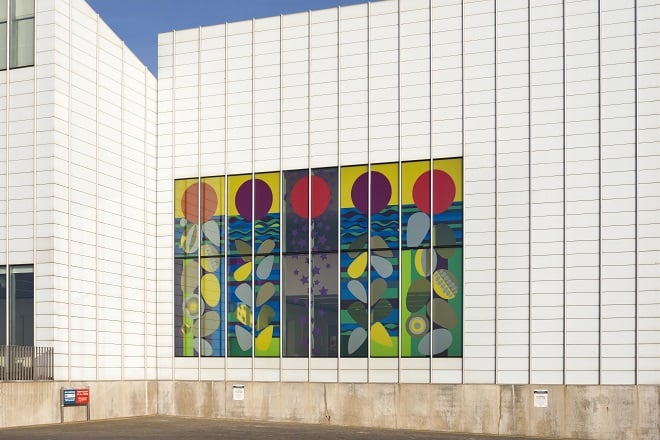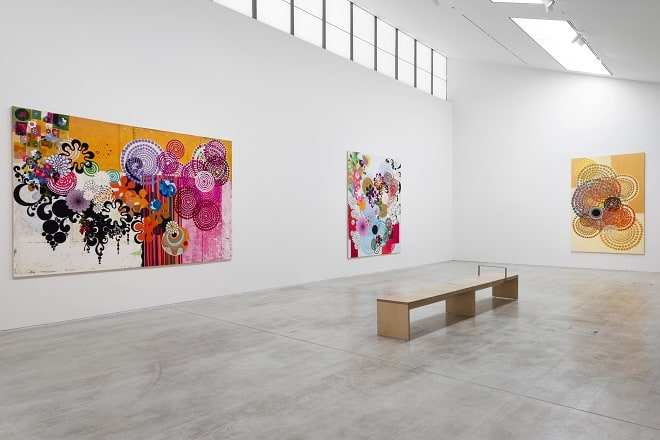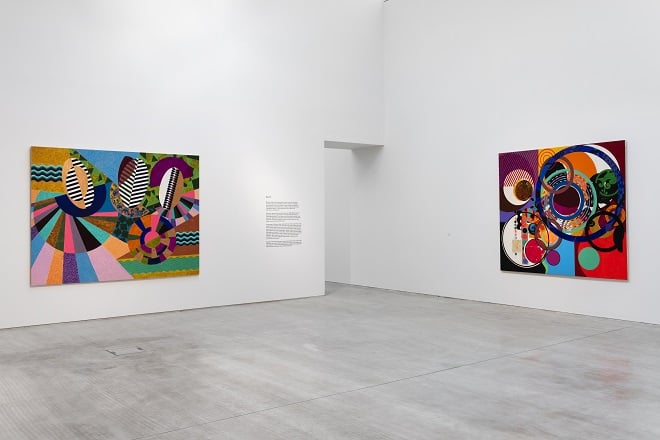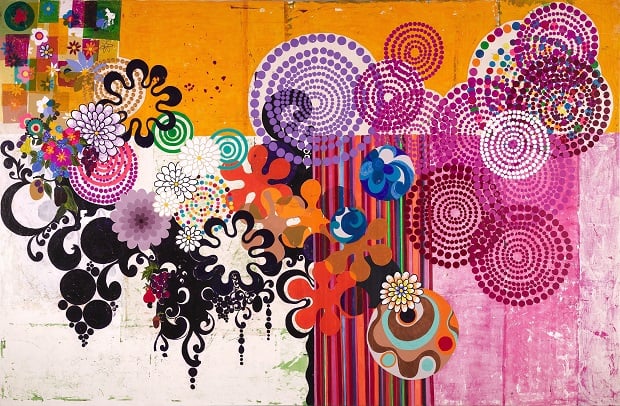
Camille Leadbetter studied History of Art at The University of Oxford and The Courtauld. She has a keen interest in the history of global museums and art institutions, and how they are changing to adapt to our contemporary societal landscape and in turn can impact our livelihoods and sense of community.
She is currently researching the impact that art institutions have had on Margate and adjacent areas in Thanet in recent years.
“I think artists are like Vampires. We are always observing, collecting visual information from the world around us. However, the way we use information is what sets us apart.” –Milhazes
The work of Brazilian conceptual artist Beatriz Milhazes is a myriad of metaphors and motifs, ranging from flowers to peace signs. Forged in bright and playful acrylic colours, these assemblages are striking enough to stun any viewer.
The first solo exhibition of Beatriz’s work in the UK since 2002, ‘Maresias’ is a collection of collage work beginning from the 1980s and her contributions to the Geracao Oitenta movement (think 80s anti-generation). These works rival fascism and the Brazilian dictatorship, crafting a story of hopefulness, personal history and joy as an act of resistance. Other works such as ‘O Leme’ are more indicative of the artist’s technical achievements, showcasing her preference of the mono-transfer technique which involves painting symbols on plastic sheets, waiting for these to dry before peeling and adding them to a canvas. This creates a thicker, more texturally rich finish.

Having assisted the exhibitions team in research and prep for her highly anticipated show, I, like many others at the gallery, was enthused to see her in person and unveil the mysterious genius behind her bright and bold collages.
Like many of the team, I had only ever seen Beatrizs’ work in digital form. Those who have seen her pieces in person will know that the layers of the collage pieces, the multiple coatings of paint that build on one another and the sometimes additions of found material like lace and chocolate bar wrappers create an abundant wealth of texture that cannot be replicated in two-dimensional form.
Collage as a medium has flourished across the world in various art movements, from Pop Art to the post war Abstract Expressionist collages of found material. Beatrizs’ use is representative of her desire to spark a sense of celebration. Each motif reflects an aspect of her life – the peace signs in ‘O Sol de Londres’ (2003) for instance, refer to the hippy generation and a dedication to world peace.

Working mostly from her studio in Brazil, which I’m told has views ranging from Copacabana beach to a local botanic garden, it is no wonder Beatriz’s work is infused with such a vivacity. Brazil, with its carnival culture and tropical climate, naturally opposes dullness.
The question one then asks is can these delights work in the same way when shipped across to British shores? The Sunley Gallery windows answer that precisely. When the sun beams through them, Beatrizs’ commissioned window collage bathes the floor of the Turner shop and balcony in hues of pinks, yellows, greens etc. It’s transformative properties embed Margate in this sense of Carnival-culture, boldly announcing that Summer is now upon us, as well as the joviality that comes along with it.

Milhazes work is not so one-dimensional, however, as the artist shares worries surrounding past and current socio-political regimes (from Bolsonaro’s denial of Climate Change, loss of natural rainforests and the ongoing troubles faced by the LGBTQ+ communities in South America). Her found object collages, for instance, refer to the beauty in the everyday but also suggest an understanding that waste and our lack of commitment to the preservation of nature could be mankind’s downfall. The rainbow colours in the collection may also be taken as the artist’s dedication to the LGBTQ+ community, sharing a hope that equality and love is on the horizon. These are concerns that mediate amongst communities from Brazil to Margate, affecting us all. Milhazes’ work reminds us of the peace and love we are fighting for.

We are welcome to take away from the show as much as we like, with no immediate political agenda or cultural commentary, but rather the reminder that the world around us is as beautiful and complex as one of Milhazes’ paintings.
A visit to the exhibition is worthwhile for anyone seeking an injection of pure joy and colour into their life. Approach the show however you like, sun-bathing in the coloured rays of the Sunley Window, spend a few minutes getting lost in ‘O Leme’, or merely take a spin in one of the galleries allowing the works to speak to you. But do remember, the artist is speaking to you about the beauty of the world by evoking that of her home country – how is Margate beautiful to you? What can you do to preserve the beauty of your own environment?

